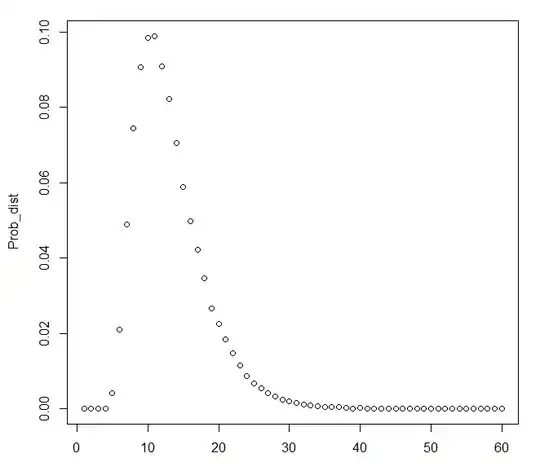First of all, measure alone doesn't help. Take a closed set of positive measure with empty interior and have good luck covering the circle with its rotations.
Second, you can solve the original problem without few hairy integrals though with some series. To start with, let us find the probability $P_n$ that after $n$ spins the circle is still not fully colored (the expectation in question is then just $\sum_{n\ge 0}P_n$). This is equivalent to saying that after we place $n$ random points on the circle, we'll be able to find at least one of them so that the quarter circle arc after it (looking clockwise, say) is free of other points. Note that in general there may be up to $3$ points like that, so we have to use the inclusion-exclusion principle (PIE). First, note that the chance for each particular point to be like this is $\left(\frac 34\right)^{n-1}$. Since there are $n$ points, we get $n\left(\frac 34\right)^{n-1}$ for the first term in PIE. Now let us look at the pairs. We have $\frac{n(n-1)}2$ of those. Placing the point with the smaller index first, we get
$\frac{n(n-1)}2\left(\frac 12\right)^{n-1}$ for the second term in PIE (the first $1/2$ is there because the second point should lie outside the half-circle centered at the first point and the rest are there because other points should lie in a set of measure $\frac 12$. Finally, we have $\frac{n(n-1)(n-2)}6$ triples. This time the probability is a bit harder to compute because after we place the first two points, the space remaining for the last one depends on the positioning, so one hairy double integral seems unavoidable in this approach. Fortunately, after that you just multiply by $\left(\frac 14\right)^{n-3}$ and get
$$
P_n=n\left(\frac 34\right)^{n-1}-\frac{n(n-1)}2\left(\frac 12\right)^{n-1}+
\frac{n(n-1)(n-2)}6\cdot I\cdot \left(\frac 14\right)^{n-3}
$$
where $I$ is the hairy integral responsible for the placement of 3 quarter-circles without overlaps.
It remains to sum the series, but, fortunately, we know $\sum_{n\ge 0}x^n=\frac{1}{1-x}$ and differentiating this identity $3$ times is not a big deal. You get some fancy rational number in the end.
If somebody can offer a more elegant approach, I'll be interested in seeing it too.
